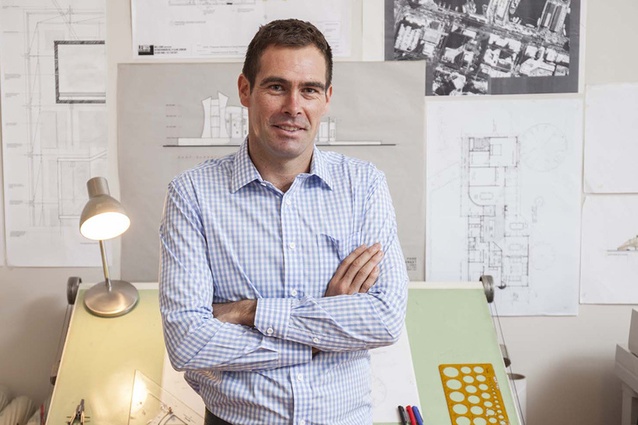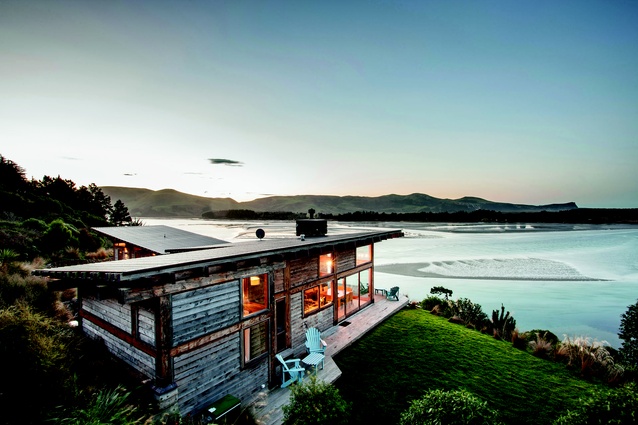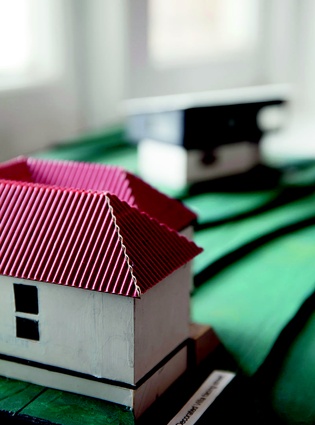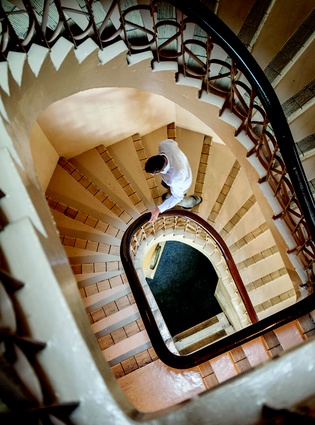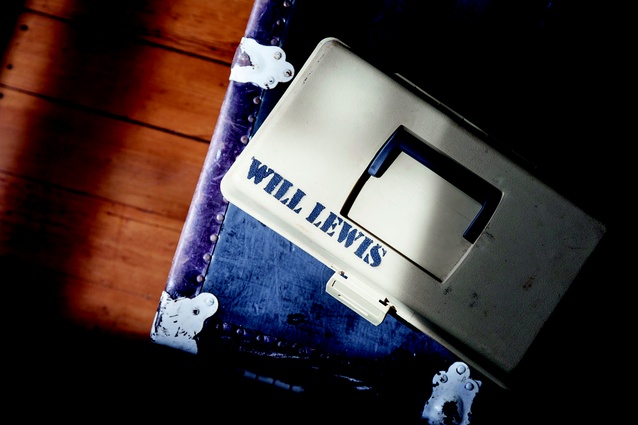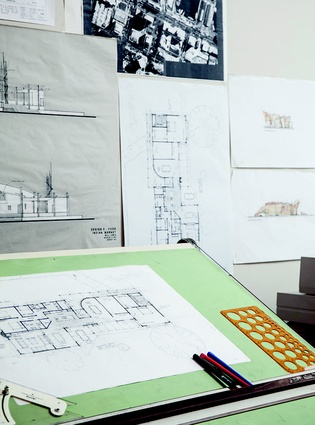Southern Man
Will Lewis has spent as much of his life in the water as he has on land. He grew up on Dunedin’s renowned surf beaches and is a keen surfer still, but it’s not just his hobby that keeps him out to sea – much of his work has involved designing and implementing large marine engineering systems. It is highly specialised work that took Lewis overseas and back again for many years but, nowadays, his small architectural studio’s focus is on residential and environmentally sustainable architecture. Urbis caught up with the 35-year-old on a sunny Dunedin day to talk about his varied career.
Urbis: You completed a diploma in draughtsmanship in 1999 but, a few years later, returned to university to study architecture. Why?
Will Lewis: I worked for one year in an office in Dunedin and decided draughting wasn’t for me. So I went to the school of architecture at Auckland University and graduated in 2005.
I was then taken on by McConnell Dowell Constructors, a New Zealand firm that works all over the world. I spent about six years with them; we did large-scale, off-the-beaten-track international projects – a lot of marine and underwater construction. I started small and just sort of moved into being one of their go-to guys for marine. A lot of that work is about how to build things in rational ways; about coming up with creative solutions. The training I did served me really well.
U: Tell us about some of those large projects.
WL: In Fiji, we built a water matriculation project in Bua province that went around villages and supplied water to people. [As the site architect,] I built a whole wharf from scratch – the buldings, the gates, the landing areas, the roads. That was a challenging project. In the Pitcairn Islands, the British government decided to inject a whole lot of money to make it more civilised and sociable. Part of that was the reconstruction of their wharf and I went backwards and forwards [to the island] for that.
U: What about projects in New Zealand?
WL: I was heavily involved in the Christchurch City Council’s Ocean Outfall Project. That was based in New Brighton and it went for two-and-a-half years. We’d construct pipelines that weighed 1000 tons, float them and try and join them under the water on the sea floor. It was the largest project the council had undertaken at that point [and was classed as a Project of National Engineering Significance]. It was quite exciting: a lot of delays, a lot of divers, barges and cranes. Projects like that are full of challenges. The Kawhia Ironsand pipeline was quite a technical project too. We built it in New Plymouth then towed it under the water to Kawhia. We accidently dropped it, which was a bit complicated!
U: You left McConnell Dowell to start your own practice in 2012. Why?
WL: That work took me further and further away from architecture. I was doing a lot of travelling and, in the end, I was sick of it. I decided to move back to my home town. I’m still doing engineering consulting to those companies but it’s on a more corporate level. And certainly in terms of dealing with builders and logistics [on residential projects], it’s very easy for me now. That’s a real benefit of my experience.
U: Early on in your career, you built Kaimata Retreat, an ecologically friendly lodge on the Otago Peninsula. How did that job come about?
WL: I designed that at architecture school. I own the land next door to the client and they knew I was studying to become an architect. I told them I’d be slow but they were happy to work with that. It was a major project to take on while studying full time as a young 25-year-old. It took a total of three years. A lot of these projects take an extremely long time; there are always delays. I used reasonably common principles that all architects are taught – to design the width of rooms based on where the sun went in winter, considering where the sun falls on your eaves, harnessing the sun from stone and concrete materials, installing really good insulation. The property is almost self-sufficient – the freshwater supply comes from the site. The building is made from non-toxic materials, with post-and-beam construction, so the cladding and glass are in in-fill panels. The client wanted to be able to see the construction and it gives it a nice rhythm that creates the architecture. It’s become really successful and one of the top lodges in New Zealand.
U: Would you say that your own practice, Lewis Architecture, has developed a particular aesthetic?
WL: I have my own philosophy; I really like to see the structure, the house, fit into its surroundings rather than stick out on the landscape. I do like the passive design philosophy but sometimes you get clients that want to do something totally different and you go on a journey and you mix it all together.
U: How does architecture – old and new – in the South Island differ from that in the North Island?
WL: Architecturally, Dunedin is very, very rich; the wealthy times at the turn of the 20th century resulted in some great buildings. Luckily, due to a lack of wealth and development since then, they have been preserved. When I go to Hamilton and other places, the new buildings look like pre-cast boxes and it takes away from the architectural richness of the town. Auckland has some really nice work but a lot of it’s really new. Christchurch has lost a lot of its heritage buildings. My office is in the Imperial Building, a classic Queen Anne-style building, designed by Mason and Wales and built in 1906. It has a triangular footprint which gives it a New York feel; it’s a pretty cool place to have an office.
U: What are you working on now?
WL: I am doing a house in Wanaka and I’ve just finished a corrugated-iron-and-cladding bach in Haast. I’m starting a boat shed on the same inlet as the lodge. The rest of my projects are renovations; Dunedin is a real reno town and they tend to be villas or bungalows. The approach is always to match it in or make the addition very clearly a renovation.
U: What about when you’re not working; what do you like to do?
WL: Living here is a lifestyle choice. I do a lot of surfing and it’s a great place for that. House prices are relatively cheap. Everything’s five minutes’ away and then there’s so much cool stuff within a few hours’ drive. I was a bit of a corporate person and I could have had a cushy job in Auckland or Wellington but I just didn’t like the lifestyle. So, now I live in a bungalow in St Clair; it’s a fantastic lifestyle.

